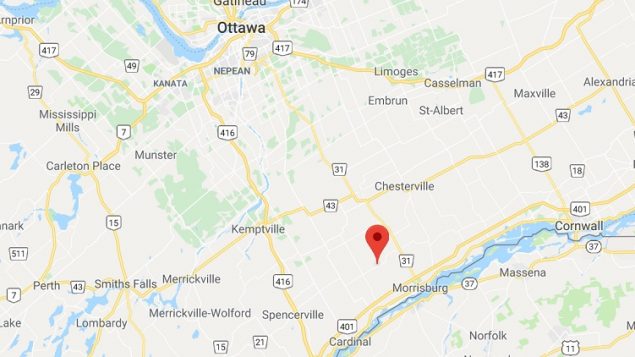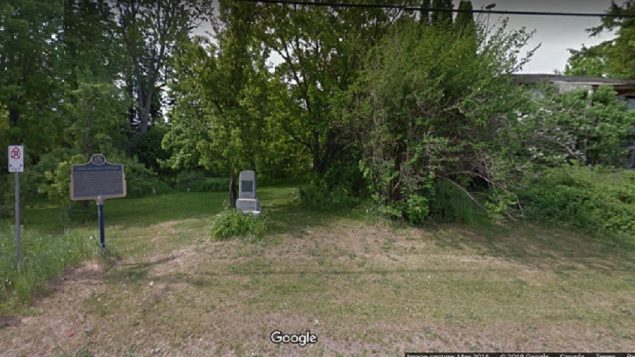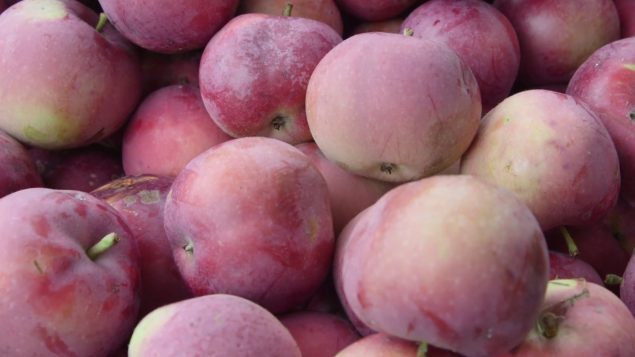Many people love it, but don’t know of its Canadian origin
The apple is one of the world’s most common fruits with thousands of varieties, but in Canada and elsewhere in N. America at least, the McIntosh is certainly one of the top varieties produced.
The farm where the McIntosh Red was found and developed is in eastern Ontario, in a small community called Dundela, in Matilda Township, Dundas County (now United Counties of Stormont Dundas and Glengarry).

A provincial historic plaque put up in 1962 beside the county road at the edge of the property notes the origins of the apple. (Kijiji)
That 5,5 hectare site, which many consider to be historic, is now overgrown, with farmhouse and buildings abandoned and falling apart.

The hamlet of Dundela is a few kilometres north of the St Lawrence Seaway about 75 km south of the national capital, Ottawa. (Google)
It has been for sale for some time, but so far no takers.
The history begins in 1811 when John McIntosh was clearing bush on his land. He came across some apple seedlings and transplanted them to his garden but only one survived. That tree gave an unusual fruit with a crisp texture and a mix of sweet and acidic.

Allan (or possibly brother Sandy) McIntosh (son of John) or grandson Harvey, stands beside the original but ailing tree, a chance discovery in the bush, transplanted by his John in the garden. It was Allan who would graft cuttings to create other McIntosh trees. Also shown is the 1952 stone to mark the property where the apple was discovered. (McInTosh Nursery Company- Canadian Geographic Archives)
With cuttings from that tree grafted onto others, the unique McIntosh variety grew in popularity to become the famous almost iconic apple it is today.
But the original tree, damaged by fire, fell down in 1909 or 1910.. A small marker was placed at the site of that tree, which remains, albeit worn and overgrown.
The McIntosh family sold the farm in 1987 to Gerd Skof an Austrian immigrant. Over the years, he became upset by the many apple afficianados who came to visit the site and trespassed on the land taking apples and causing damage. No trespassing signs were no deterent.

A older cairn and the provincial plaque at the edge of the property. The empty and deteriorating farmhouse is at the right edge of the image hidden by overgrown trees and bushes (Google)
Two years ago he and his wife moved off the property to be closer to city medical services in due to age and health concerns.
Since then the property has become overgrown, while the buildings have become rundown and vandalised.
YouTube- PostMedia- McIntosh apple situation
Skof is asking $875,000 for the property and some have said it’s an unrealistically high price.
In spite of the history of the apple and the property, Heritage Canada says it doesn’t really fit the criteria for a national designation, and much the same for Parks Canada
So far it seems the property will continue to deteriorate even as ripe apples litter the brush around the old trees.
Additional information- sources







For reasons beyond our control, and for an undetermined period of time, our comment section is now closed. However, our social networks remain open to your contributions.